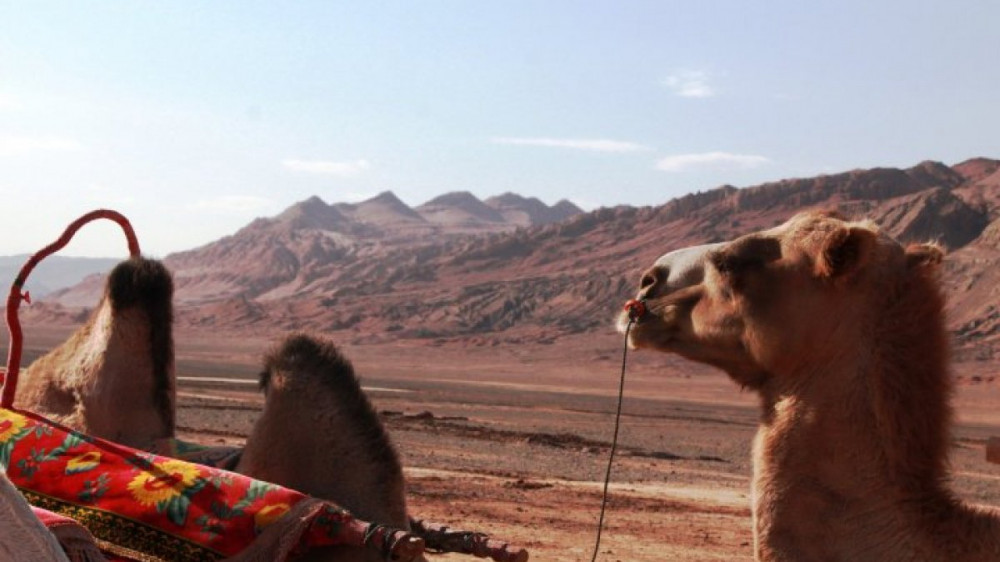






On the way to the East... ©Vladimir Prokopenko
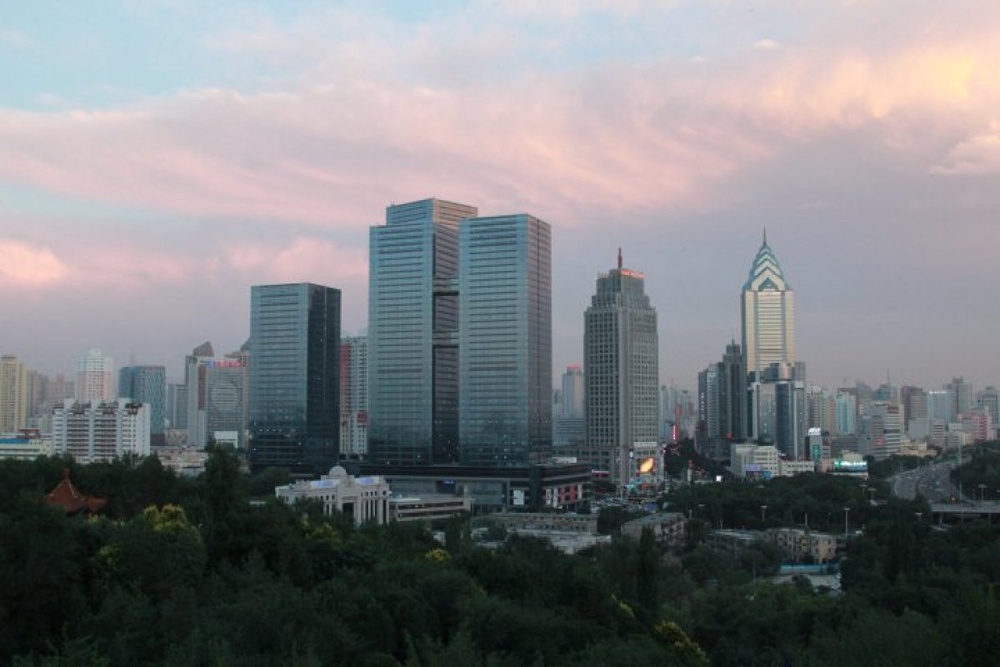
The expedition first arrived in Urumqi, Xinjiang Uygur Autonomous Region of China. Here the team met with representatives of the Ministry of Tourism of XUAR. The expedition members presented their project of the guided tour - Great Silk Road in Central Asia. ©Vladimir Prokopenko

After Urumqi the expedition headed South-West towards Turpan. They had to travel under scourging sun through a desert of gray-brown sand and clay. Turpan is one of the oldest cities in the world and center of Buddhist culture. This landscape is known as “black gravel fields”, where vegetation is sparse and trees are few. ©Vladimir Prokopenko
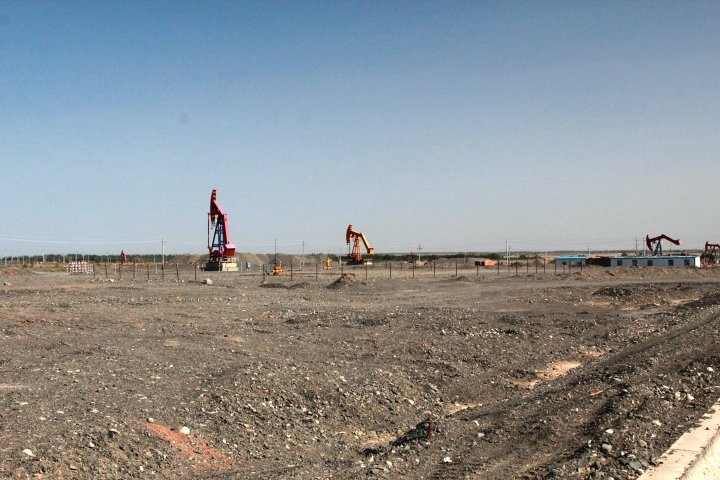
Wind turbines and oil rigs are near only things interrupting the horizon. ©Vladimir Prokopenko
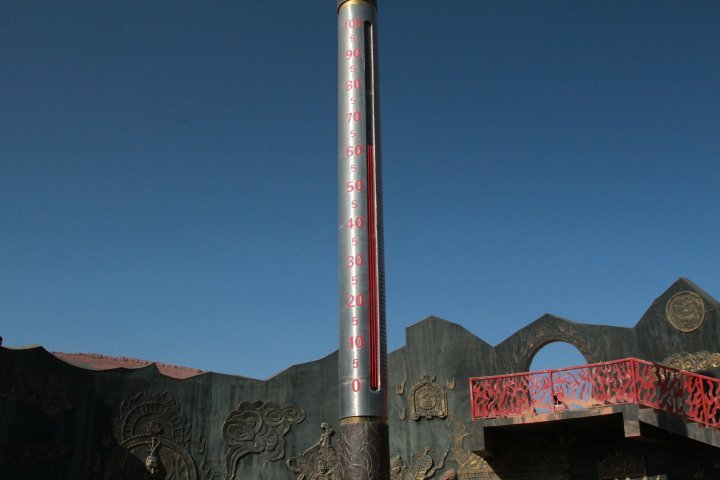
The temperatures here are above 60 degrees centigrade. Soil heats up to 90 degrees centigrade! ©Vladimir Prokopenko
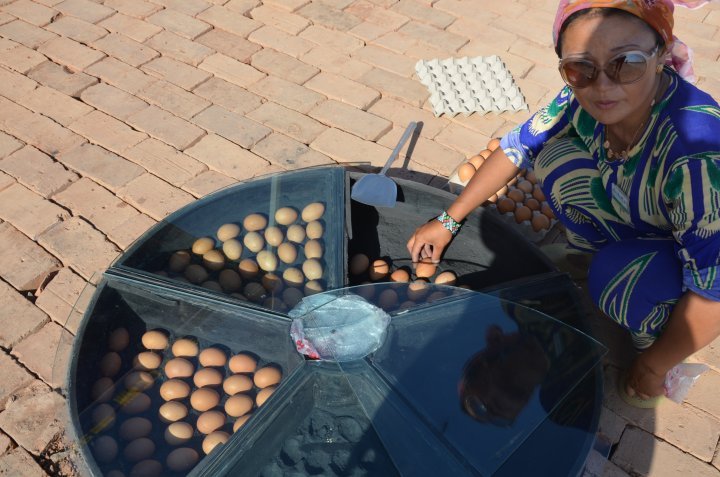
The local residents use the high air and soil temperatures to cook. The woman in the picture cooked several dozen eggs right in the sand. ©Dzhaliya Dzhaidakpayeva
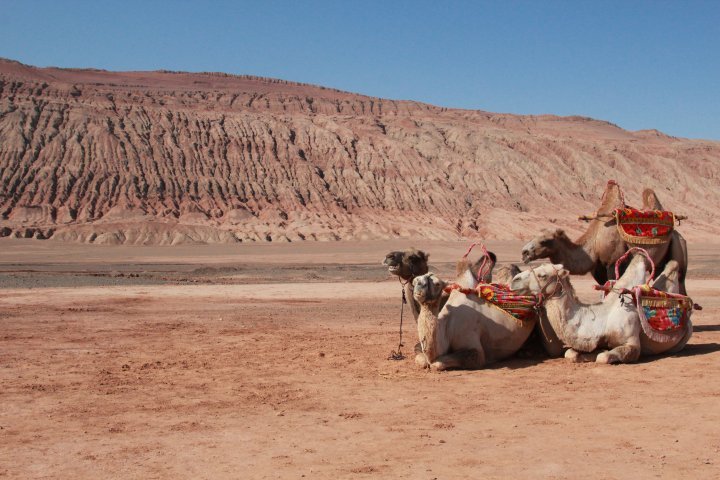
Fire Mountain close to Turpan ©Vladimir Prokopenko
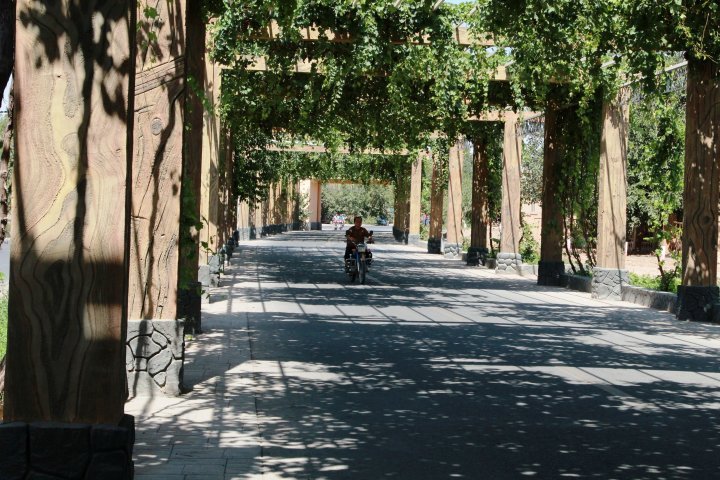
After covering more than 200 kilometres across the desert the team found itself in a completely different world. In Turpan, the lifeless desert was transformed into incredible vineyards and green fields. ©Vladiimir Prokopenko

Harsh climate forced the local residents to show some engineering ingenuity in order to survive. They dug deep wells and connected them via underground tunnels. ©Vladimir Prokopenko

The undeground channels carrying water at the depth of 5 to 10 meters below the surface, which allowed water from underground springs to reach homes and gardens. This also made the city an important hub on the Great Silk Road, giving travelers and merchants a place to rest and stock up on water. ©Vladimir Prokopenko
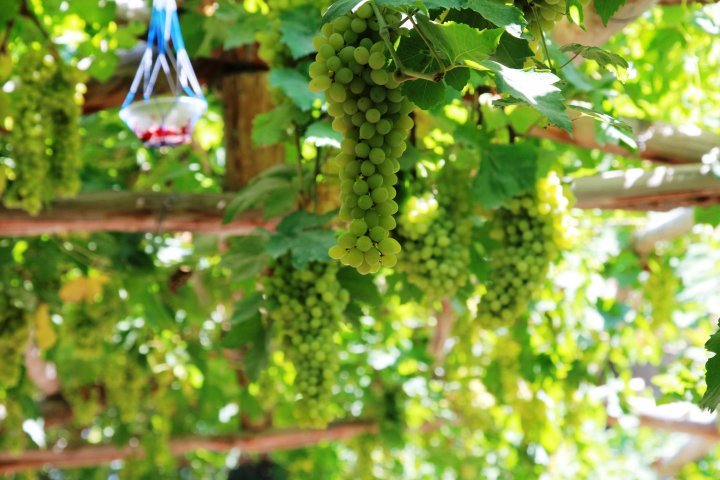
This made the city an important hub on the Great Silk Road, giving travelers and merchants a place to rest and stock up on water. ©Vladimir Prokopenko
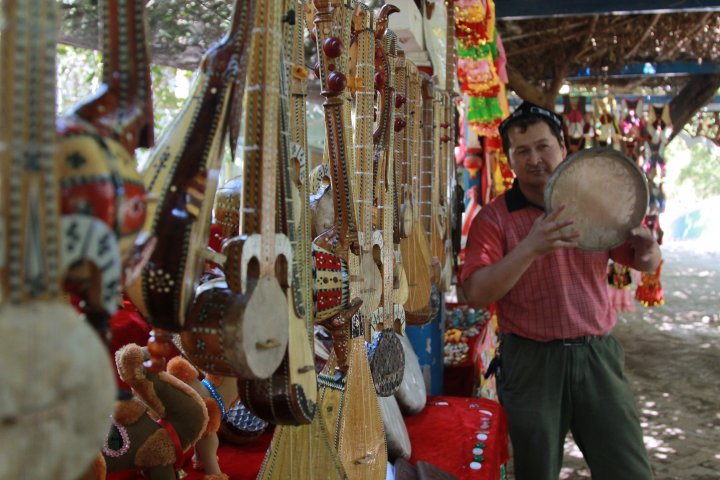
Locals are keen on music. These are hand-made instruments the locals quite often play for tourists. ©Vladimir Prokopenko
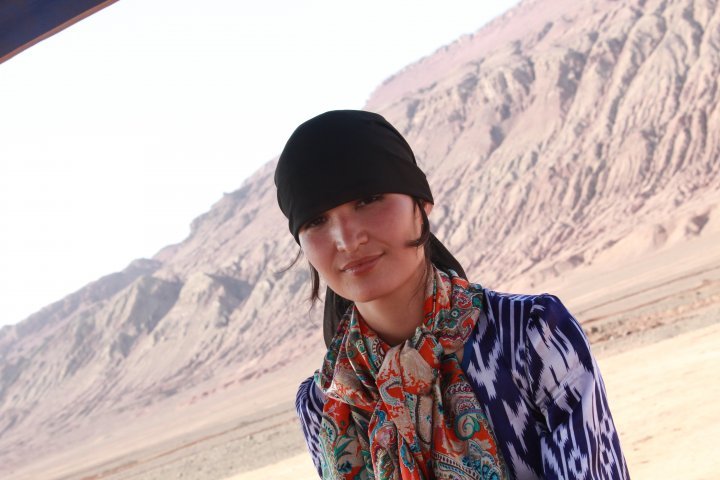
A local woman. ©Vladimir Prokopenko

Members of the expedition "Following Shoqan Walikhanov's Caravan Route". ©Ordenbek Mazbayev
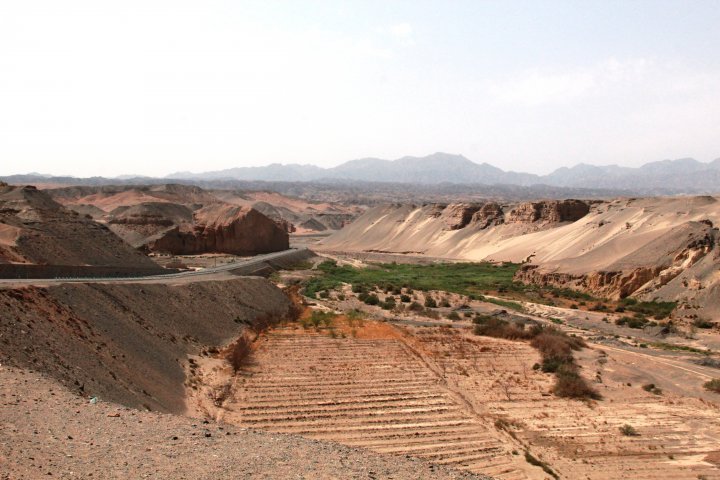
After leaving ancient Turphan, the expedition visited a city called Karashakhar. ©Vladimir Prokopenko
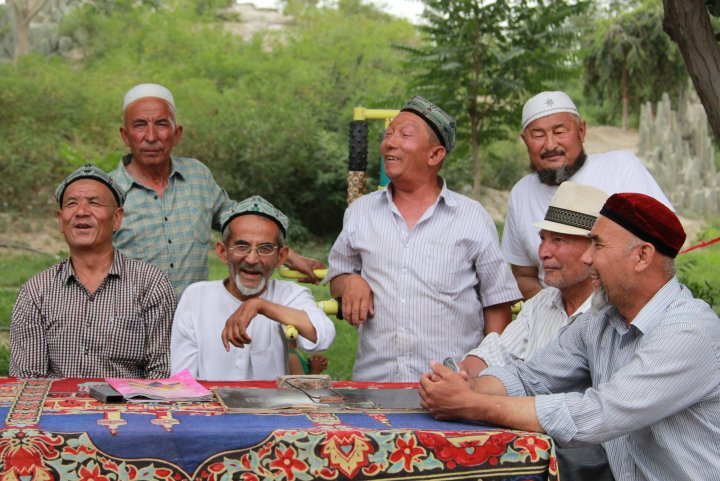
Albeit unable to stay here for long, the team from Kazakhstan managed to talk to the locals and learn something of their life in this town. ©Vladimir Prokopenko
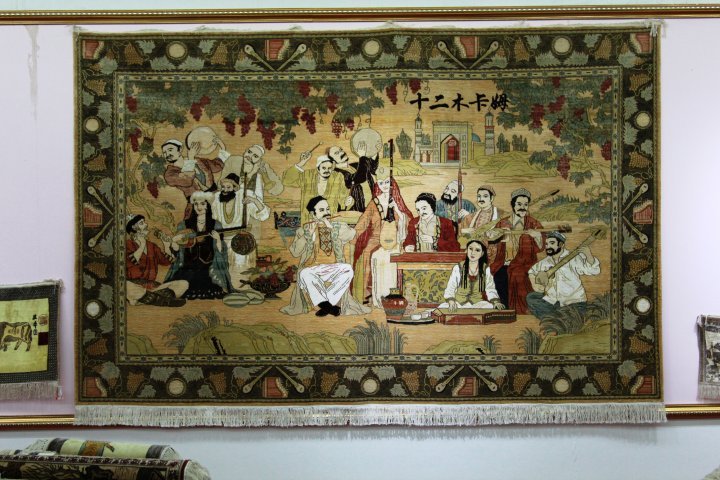
Xinjiang is also famous for silk carpets. ©Vladimir Prokopenko
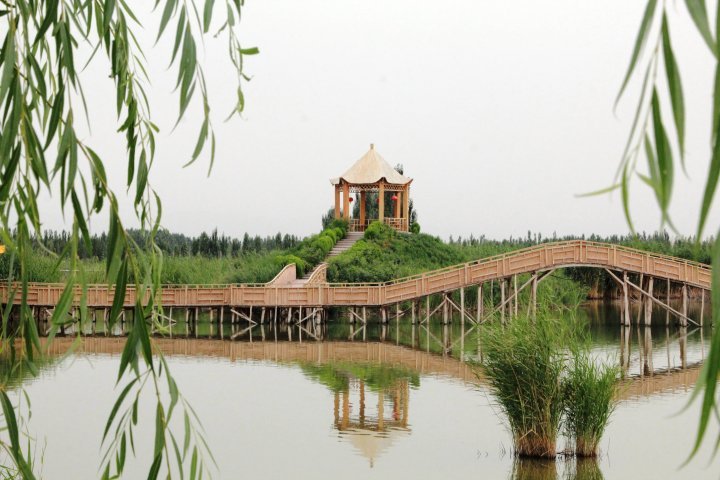
The team then reahed the highest mountain freshwater lake in China - Bosten Lake. The ancients called it West Sea or Fish Sea. ©Vladimir Prokopenko
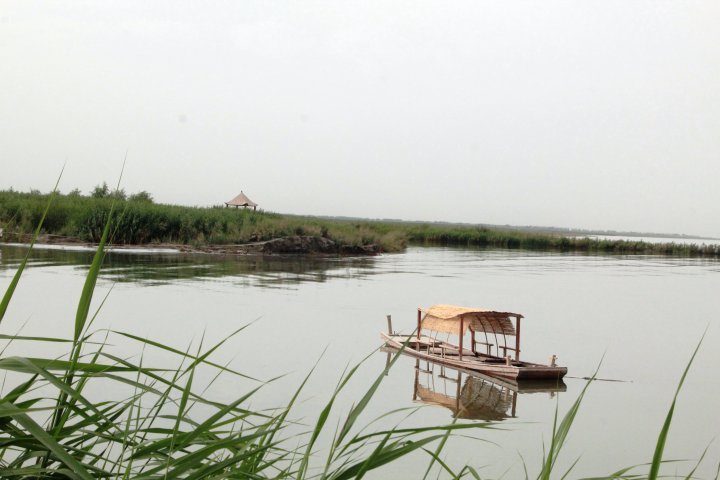
The surroundings felt especially enigmatic when the lake was topped by mist. ©Vladimir Prokopenko
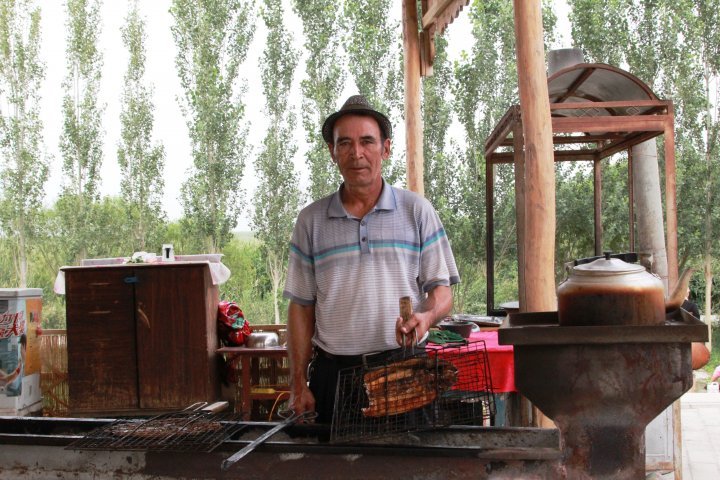
The locals cook fish on coals. They do no marinate but simply use salt and spices. ©Vladimir Prokopenko

Overcoming nearly 100 kilometers from the city of Korla, the expedition members moved to the northern part of Taklimakan Desert to the site of an ancient village on the shore of Lop Nor lake. ©Ordenbek Mazbayev
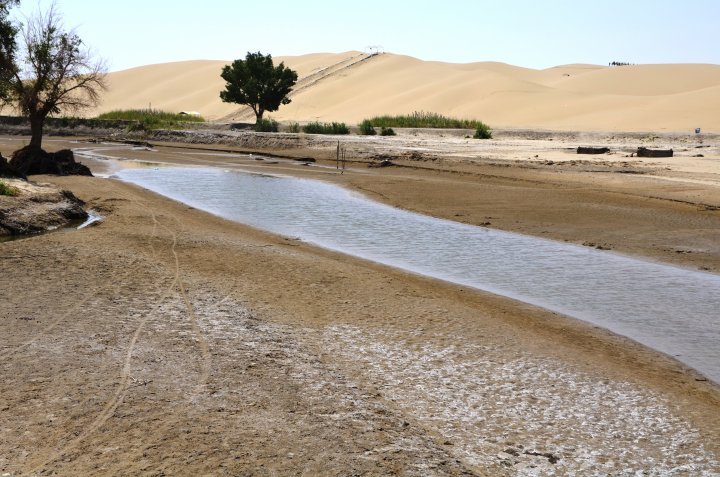
The river called Tarim is unusual. It migrates all the time and shifts the location of Lop Nor lake with it. Now, the lake has gone shallow due to various factors. Photo ©Dzhaliya Dzhaidakpayeva
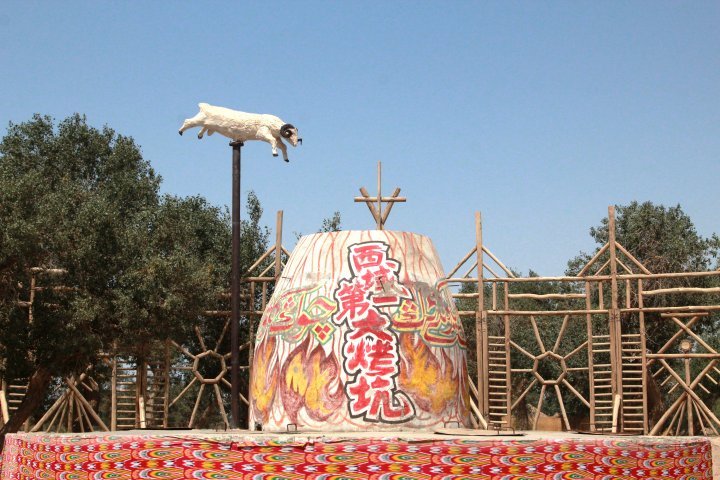
Artistic installation about the life of ancient Lop Nor inhabitants. ©Vladimir Prokopenko
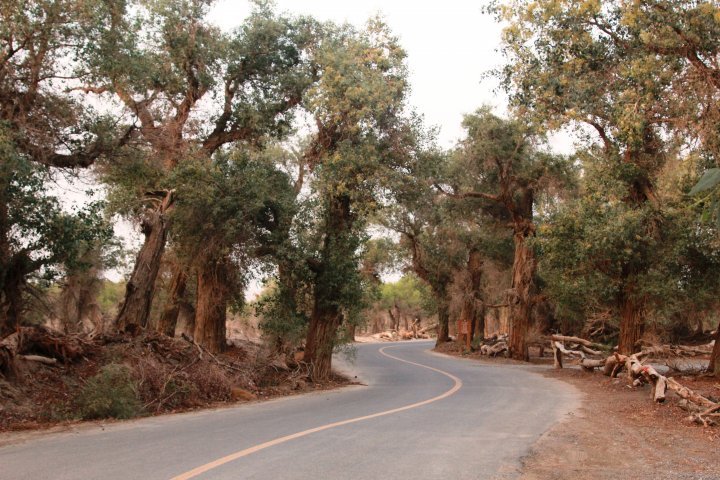
Thereafter, the members of the expedition went deep into the Taklamakan Desert and visited relict turanga forests. The 300-year-old turanga has well adapted to the local climate. ©Vladimir Prokopenko

These trees have very thick-skinned leaves and bark that can preserve precious moisture in the harsh desert conditions. Many believe that turanga nectar has medicinal properties and helps against heart ailments. ©Vladimir Prokopenko
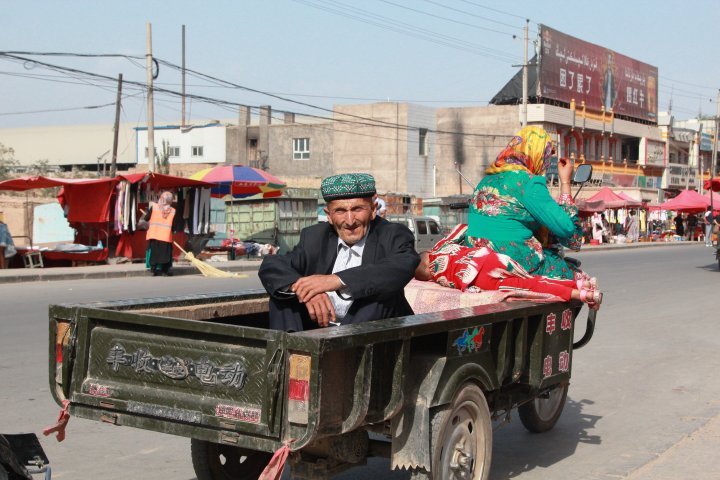
The project participants spent a few days in the ancient city of Kuchar, or Kucha as written by Walkhanov, who cited merchants in his writings. ©Vladimir Prokopenko
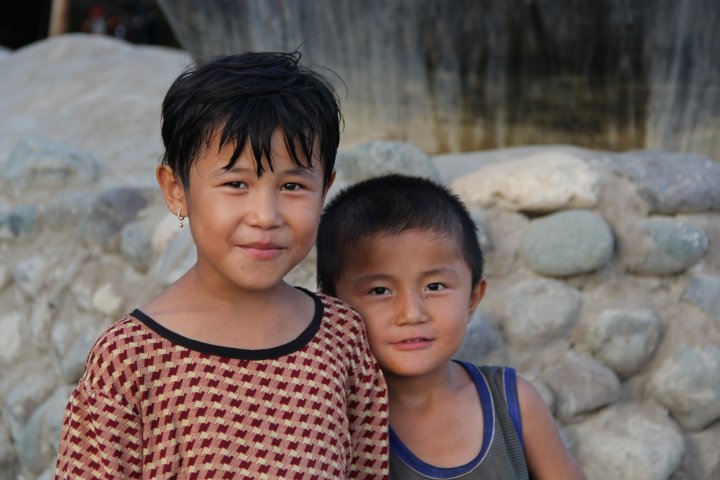
The city isn't big. Tourist come here very rarely, immediately becoming the object of curiosity for its residents. ©Ordenbek Mazbayev

Female members of the expedition changed into clothes more appropriate for the local tradition. ©Vladimir Prokopenko
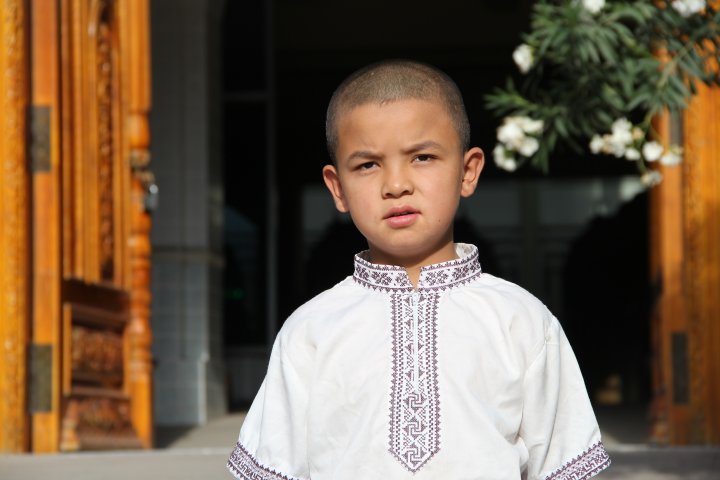
A local boy. ©Ordenbek Mazbayev

People here prefer using electrically powered mopeds to move around, so the sound of roaring engines is uncommon in the streets of Kushar unlike most other cities. ©Vladimir Prokopenko

There are just a few cars in the streets. ©Vladimir Prokopenko
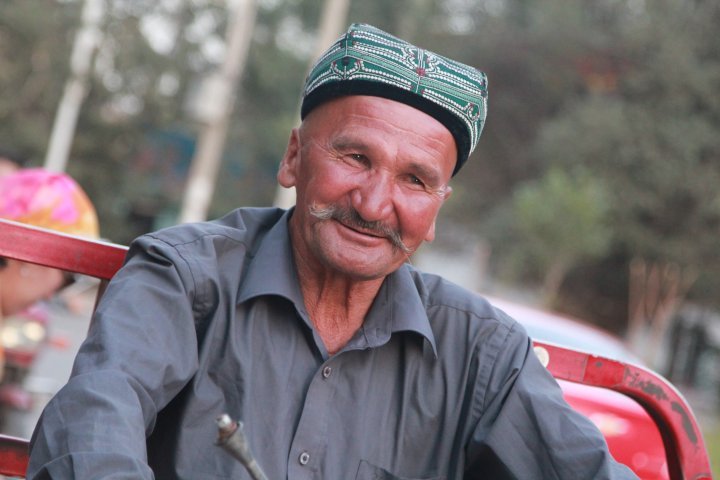
A local man. ©Vladimir Prokopenko
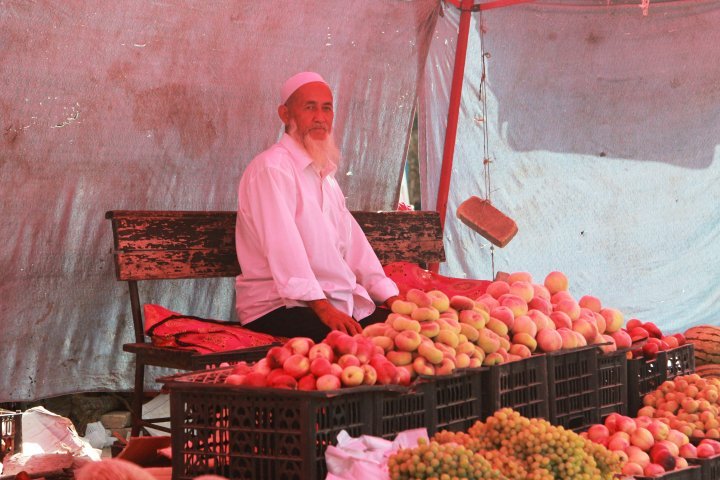
The city is rich in fruit. A mixture of smells from grapes, small apples, peaches and pears is common for the local markets. ©Vladimir Prokopenko
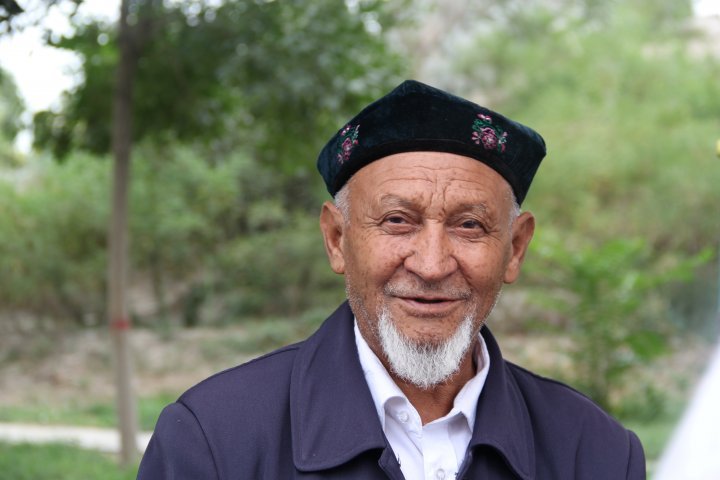
A local man. ©Орденбек Мазбаев

Traditional bread. ©Dzhaliya Dzhaidakpayeva

Shish kebab on the market. ©Vladimir Prokopenko
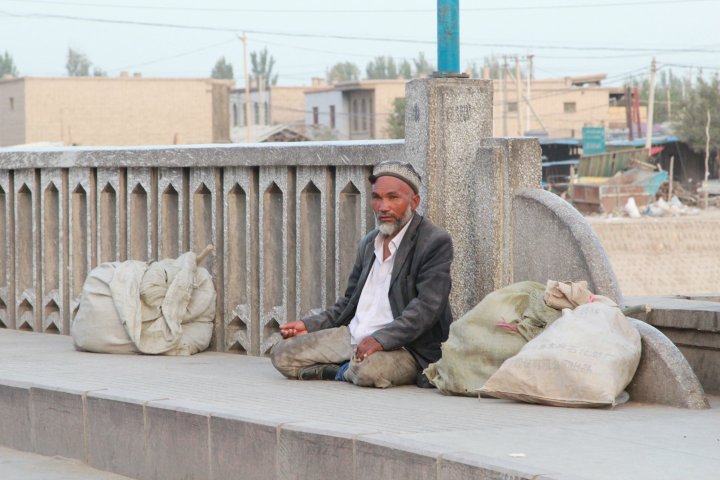
Quite a few beggars can be seen on the city streets. ©Vladimir Prokopenko
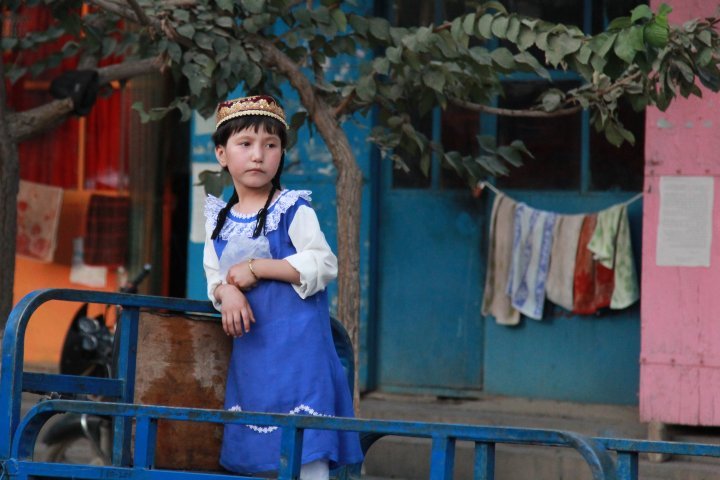
A girl in clothes characteristic for the region. ©Vladimir Prokopenko
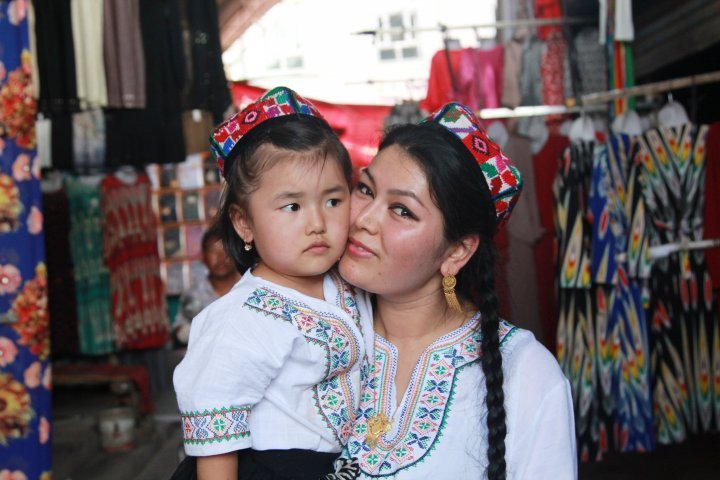
The local population has increased dramatically in recent years. ©Vladimir Prokopenko
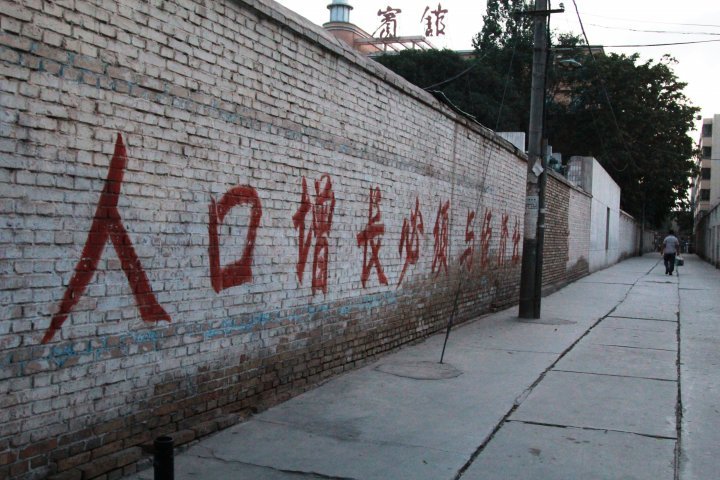
This writing on the wall says that population growth should be proportional to the development of the economy. ©Vladimir Prokopenko
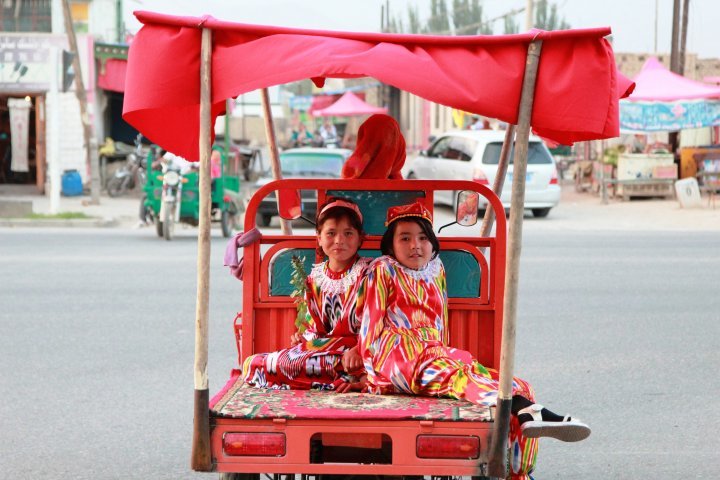
In Kuchar. ©Vladimir Prokopenko
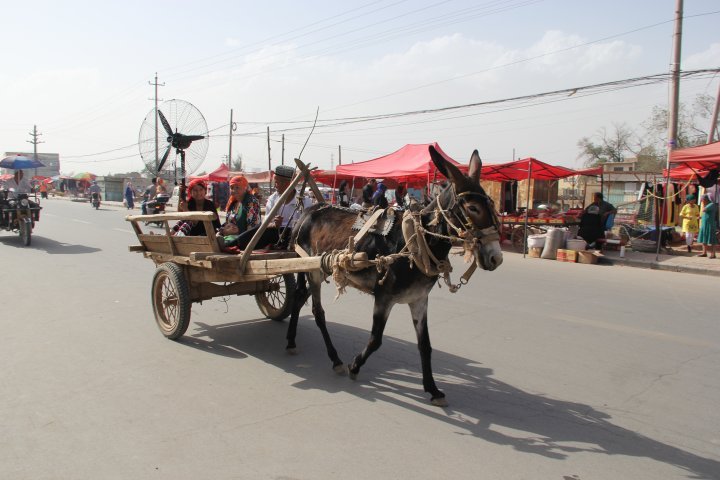
A cart with air conditioning from a local craftsmen. ©Ordenbek Mazbayev
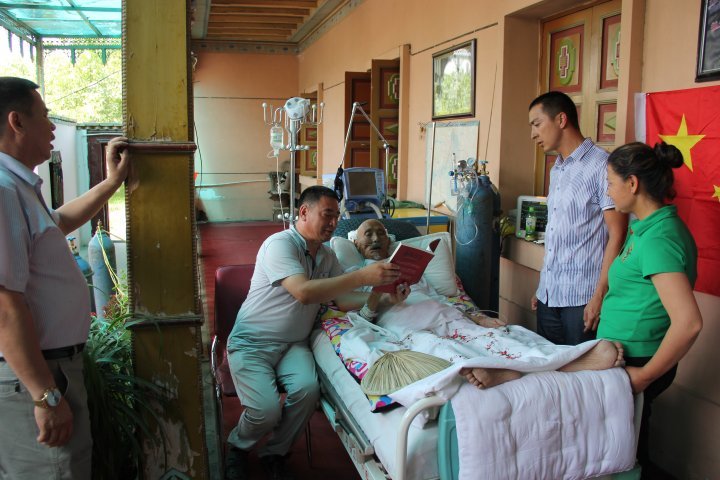
The expedition managed to meet the honorable prince of the city, a descendant of the Kuchan Khanate rulers Davut Maksut. However, due to illness, the meeting with the 87-year-old prince was brief. ©Ordenbek Mazbayev
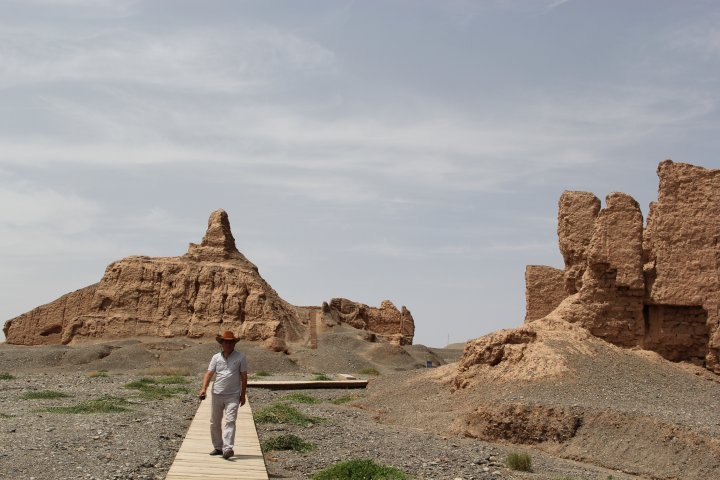
The group also visited a settlement called Subash that used to be inhabited by Buddhists. There was a large temple with many caves, where the locals came to pray and praise Buddha. ©Ordenbek Mazbayev
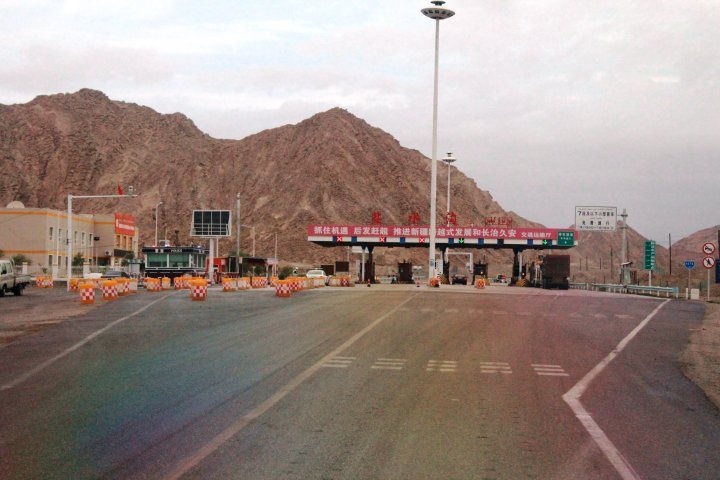
Toll roads in China. ©Vladimir Prokopenko
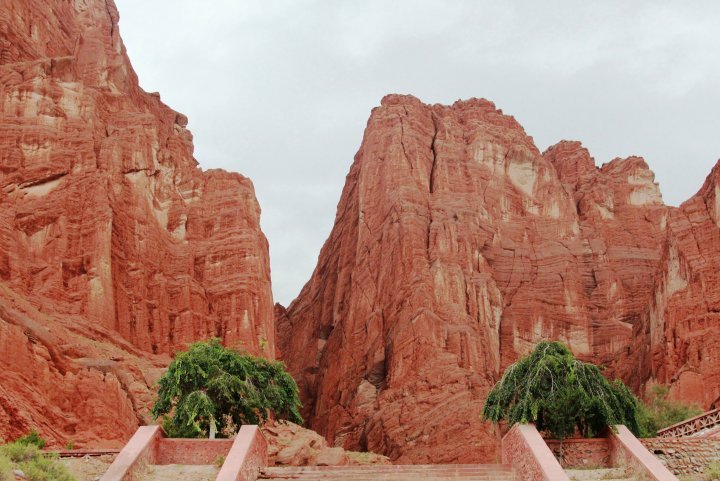
After leaving Kuchar, the expedition visited Tianshan Grand Canyon (Keziliya Grand Canyon). ©Vladimir Prokopenko

The unique geological structure has acquired its present form due to exposure to high temperatures, sunlight and strong wind for millions of years. ©Vladimir Prokopenko
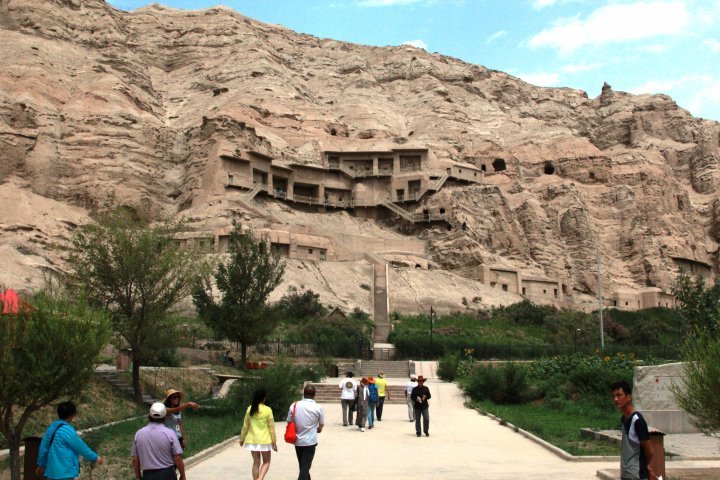
Further, the group visited another Buddhist temple called "Myn uy" (translated as ‘thousand houses" from Uighur). It is also called the Thousand Buddha Caves and is a site of great many caves carved right into the mountain. ©Vladimir Prokopenko
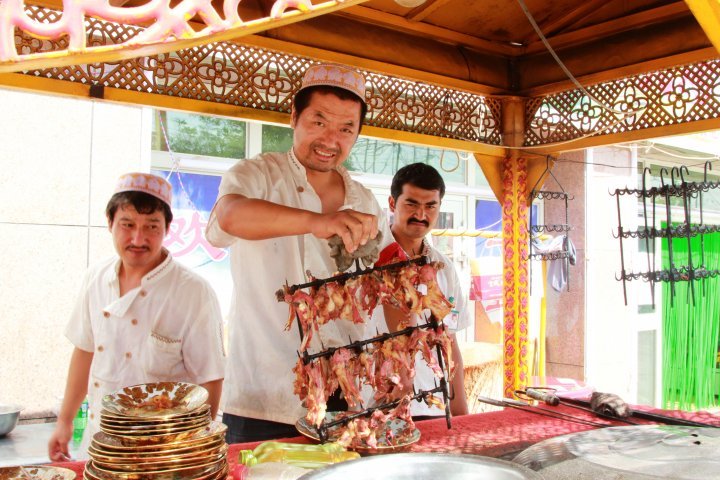
A roadside cafe. Specialty of the house? - Grilled pigeons. ©Vladimir Prokopenko
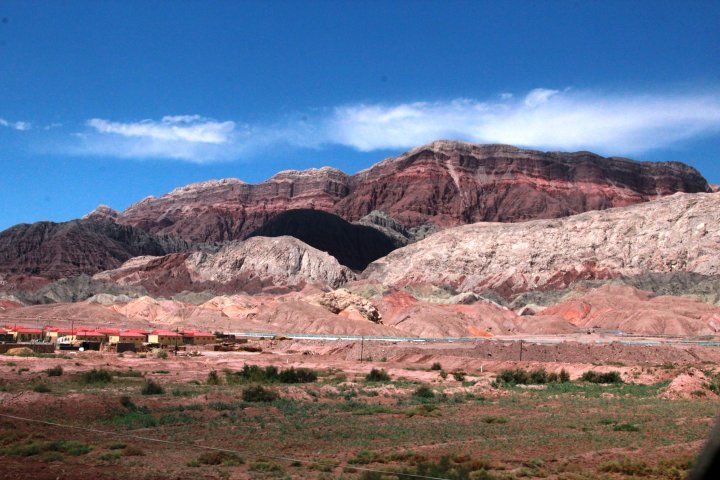
Almost in Kashgar. ©Vladimir Prokopenko
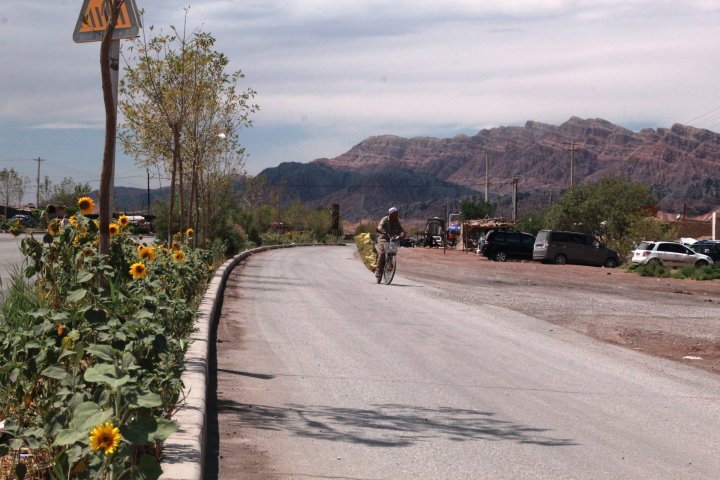
150 kilometers away from Kashgar the Kazakhstan expedition stopped in a village called Shikyar, which means "sweet" in Uighur. Indeed, the place is famous for delicious watermelons and melons. ©Vladimir Prokopenko
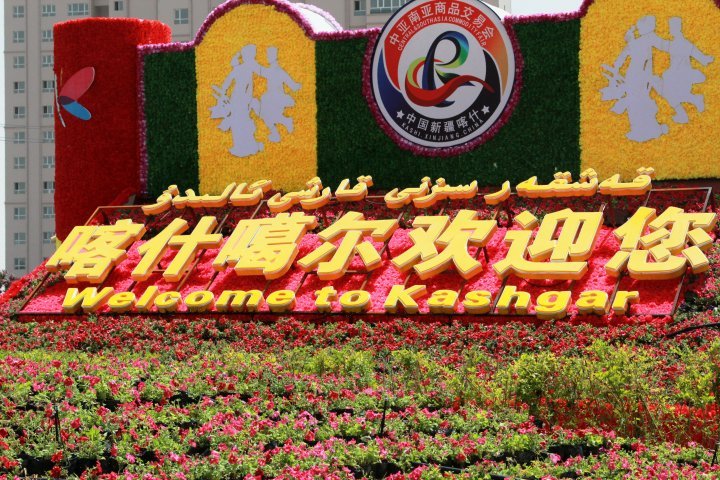
Finally, after covering more than 1500 kilometers from Urumqi, the expedition arrived in Kashgar, the ancient and mysterious city of Xingjiang. ©Vladimir Prokopenko
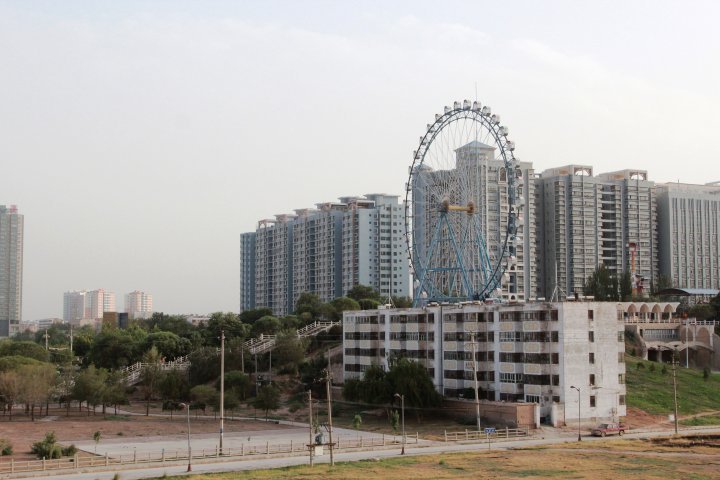
Nowadays, Kashgar is a big modern city with skyscrapers. ©Vladimir Prokopenko
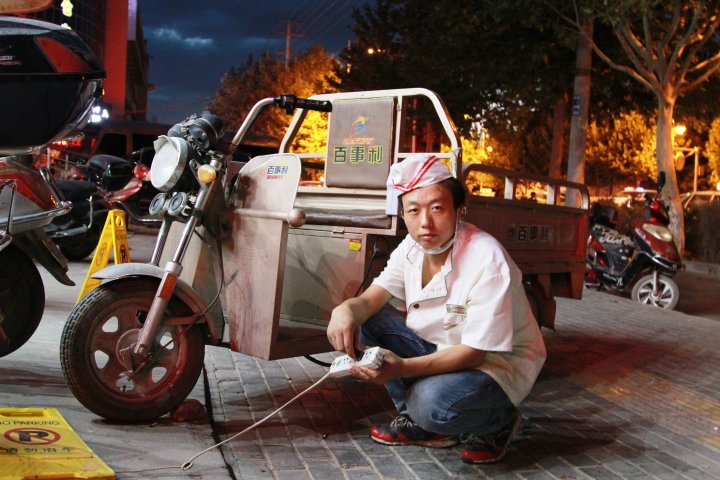
The locals prefer using electric mopeds. They can be recharged at any store by asking an extension cord. ©Vladimir Prokopenko
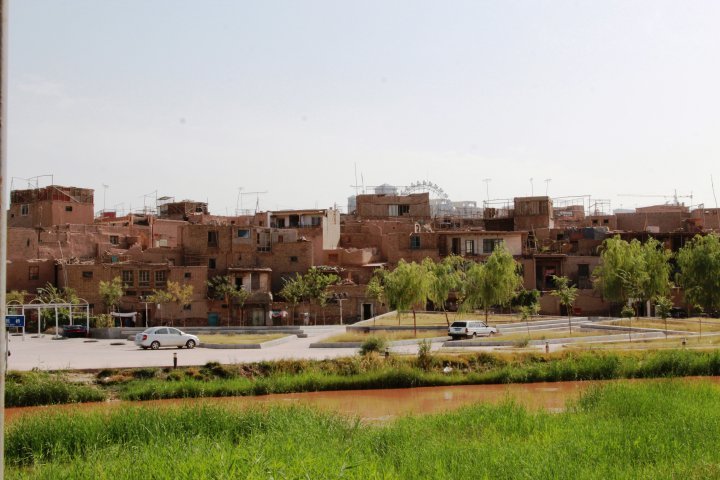
Unfortunately, the old Kashgar as described by Shoqan Walikhanov, can now be found only as a collection of several architectural objects and a small district in the old city. ©Vladimir Prokopenko
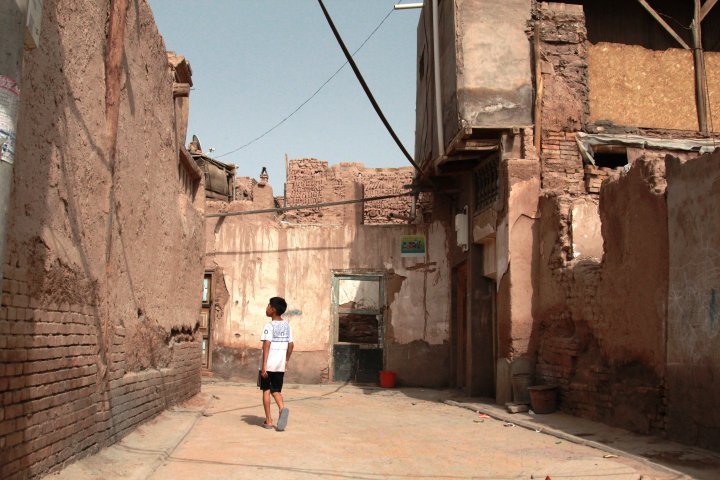
One can find houses that were built anywhere between 200 year ago and in places as far back as 500 years ago. The expedition members walked the ancient winding streets in the historical part of the city, talked to the locals and imagined how Shoqan Walikhanov felt about the city and what he thought when he lived there. ©Vladimir Prokopenko

23-year-old Shoqan, disguised as a merchant named Alimbai, arrived in the ancient Kashgar on October 1, 1858. He moved in with his supposed relatives and began studying the region. For five months the Kazakh scientist immersed himself in learning the local way of life, culture and customs. ©Vladimir Prokopenko
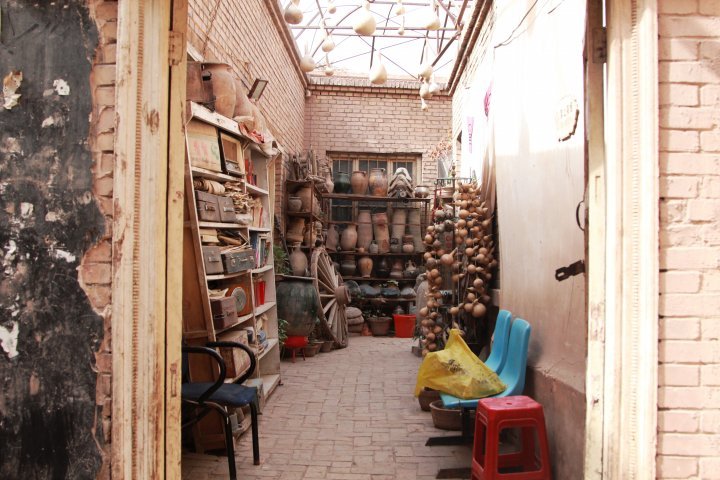
One can find numerous antique shops in the old city. ©Vladimir Prokopenko

Inside one of the shops. ©Vladimir Prokopenko
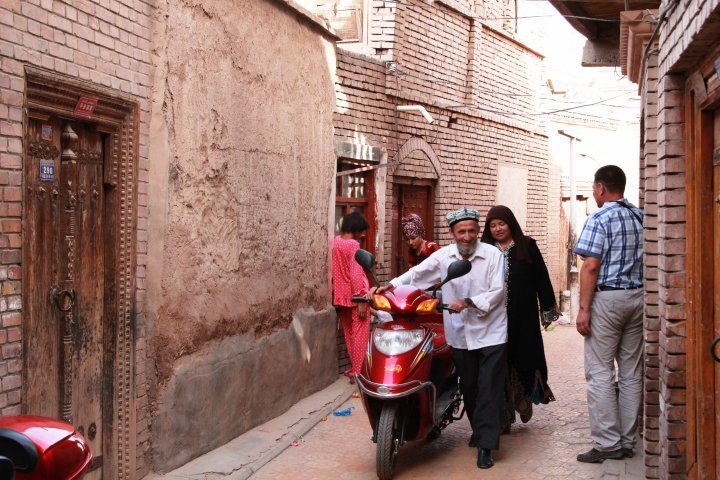
Life in the old city is sustained mainly because of tourists. Travellers from all over the world come here. ©Vladimir Prokopenko

Many local residents try to preserve their houses in an original traditional guise. They are happy to welcome tourists and talk about the life of Kashgarians. They can also show you around the house for a small charge. ©Vladimir Prokopenko

Inside one of the houses. ©Vladimir Prokopenko
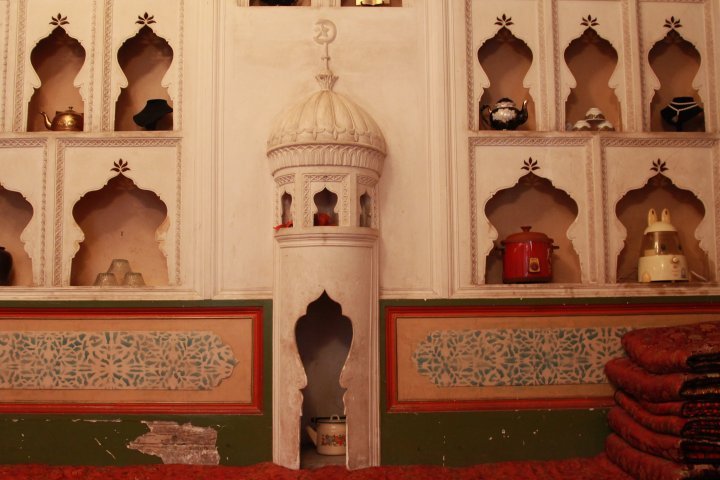
Traditional oven. ©Vladimir Prokopenko
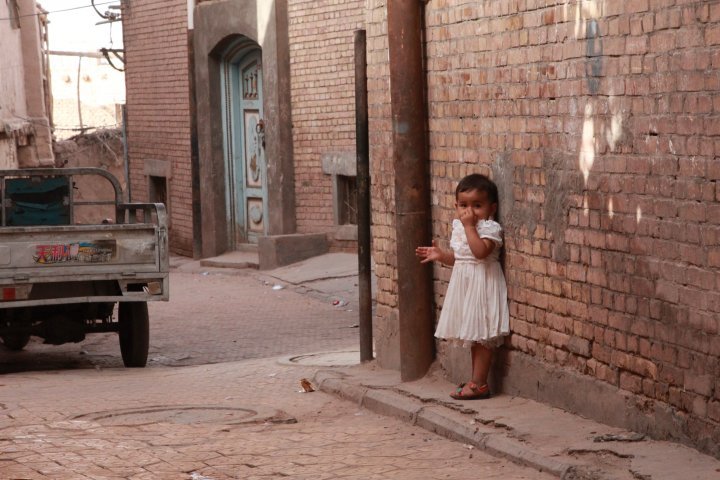
However, one could not escape the feeling that life in this part of town was quite poor. ©Vladimir Prokopenko

The old narrow streets of Kashgar. ©Vladimir Prokopenko
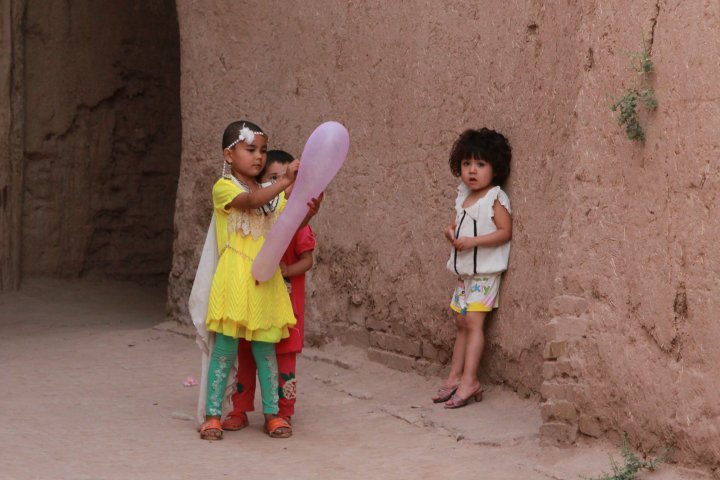
Children in the old city. ©Vladimir Prokopenko
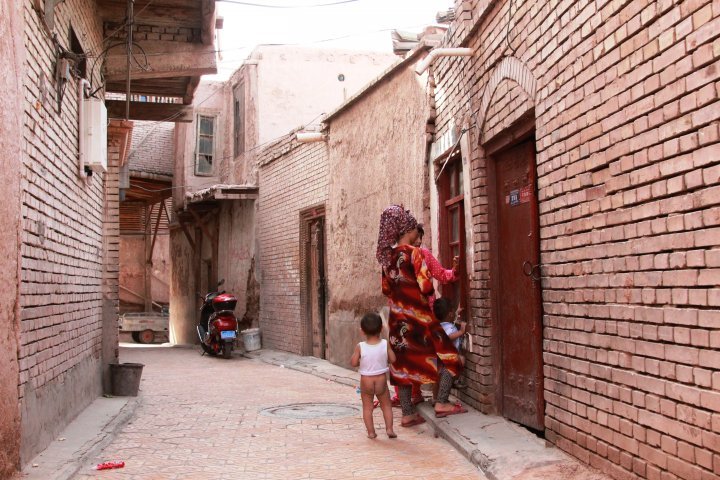
Local residents. ©Vladimir Prokopenko
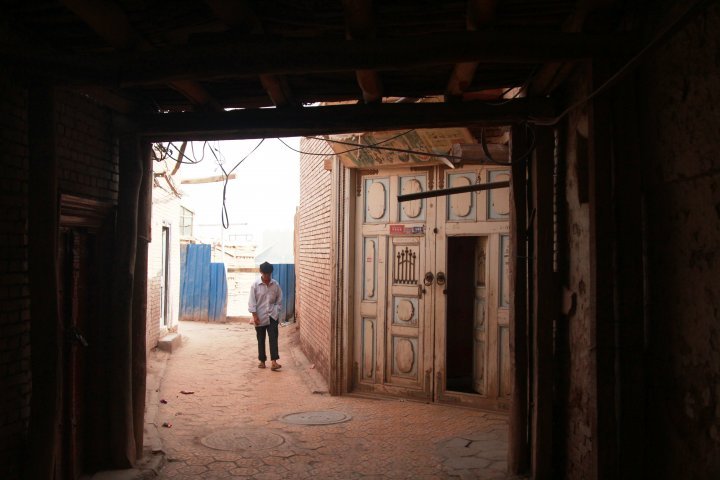
One can smell history everywhere here. ©Vladimir Prokopenko
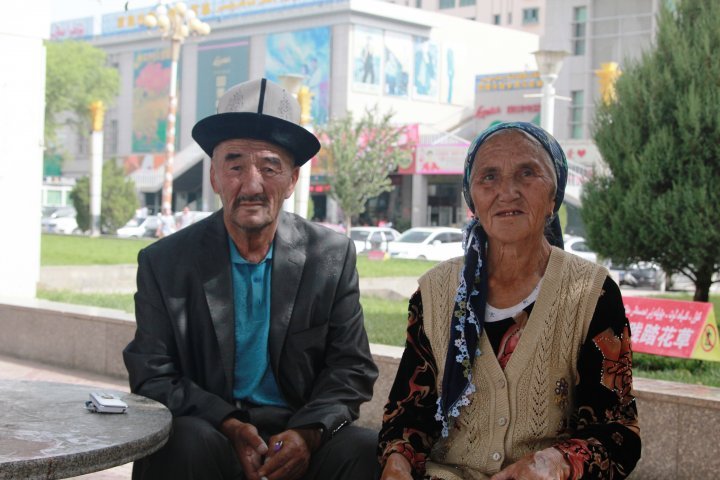
In Kashgar's suburbs one can find an urban county named Artush. ©Vladimir Prokopenko
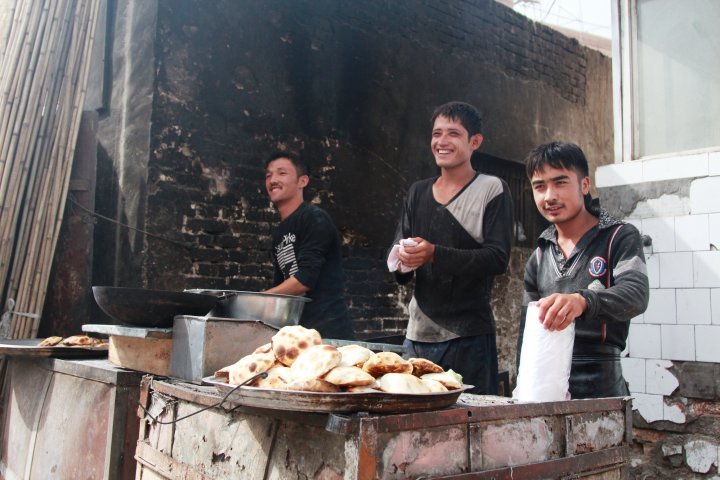
Preparation of traditional food in tandyr owen. ©Vladimir Prokopenko

Monument to Mao Zedong in the center of Kashgar. ©Vladimir Prokopenko
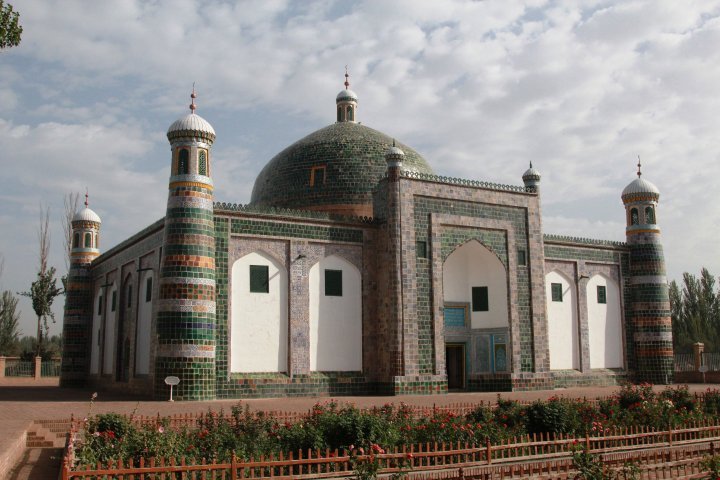
Having returned to the historical center of Kashgar, the expedition visited one of the major landmarks of the ancient city - the tomb of the rulers of Kashgar, the mausoleum of the religious and political leader of Eastern Turkistan Abakh Khoja. ©Vladimir Prokopenko
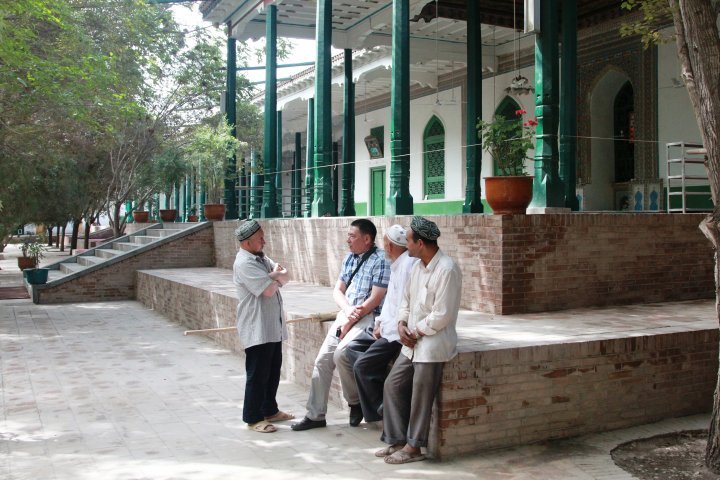
The expedition members spoke to the locals. ©Vladimir Prokopenko

The Id Kah mosque, which is the largest mosque in Xinjiang and one of the three most respected mosques in Central Asia, was the next sight visited in Kashgar. Its other name “Aitigaer” translates from Uighur as "festive". ©Vladimir Prokopenko

There are 18-meter minarets at each side of the gates of Id Kah. After the central arch there is a large courtyard, the place of worship. The yellow-white mosque can accommodate more than ten thousand people. ©Vladimir Prokopenko
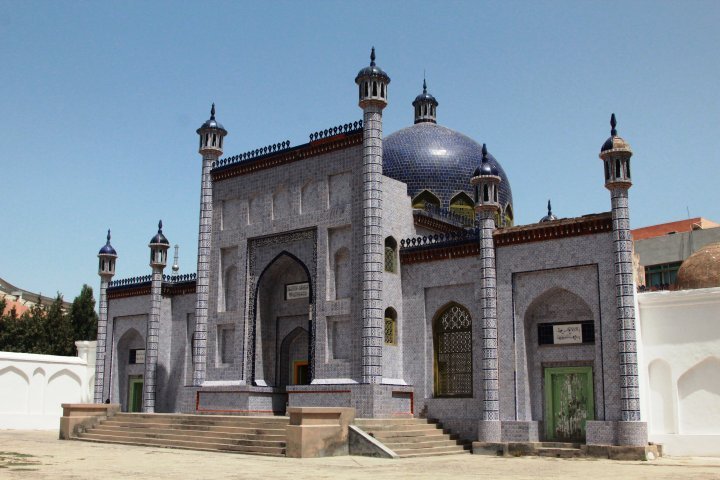
Next, the project participants from Kazakhstan visited the mausoleum of Turkish writer and thinker of the 11th century Yusuf Khass Hajib Balasaguni. ©Vladimir Prokopenko
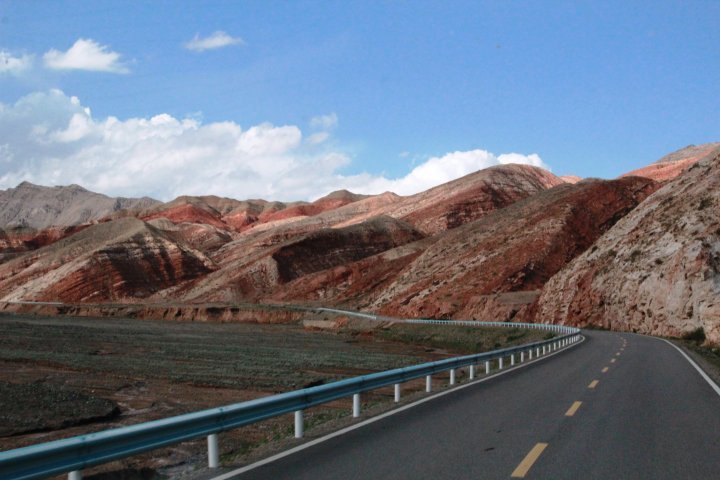
After leaving China, the expedition went to Kyrgyzstan. The project participants traveled through Torugart (Torogat) on August 4. Walikhanov mentioned this border crossing in his writings. ©Vladimir Prokopenko

At the border. ©Vladimir Prokopenko
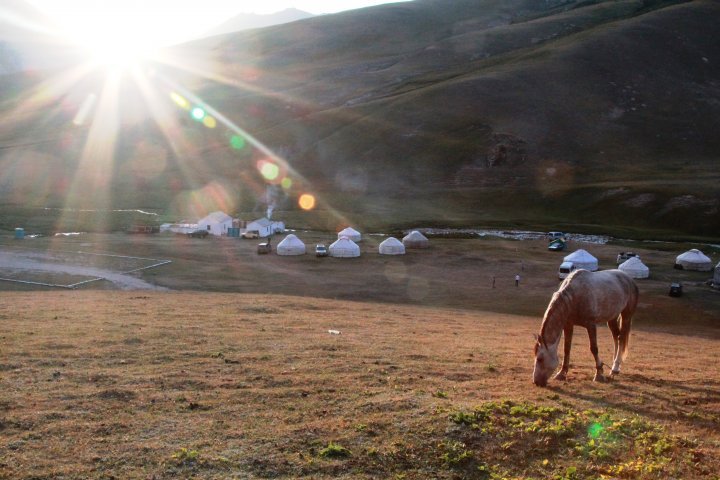
The expedition arrived to the ancient caravanserai in Kyrgyzstan late after dark. The name of this place is Tash Rabat. The expedition explored the site the next day after having an overnight sleep in a yurt camp right next to it. ©Vladimir Prokopenko
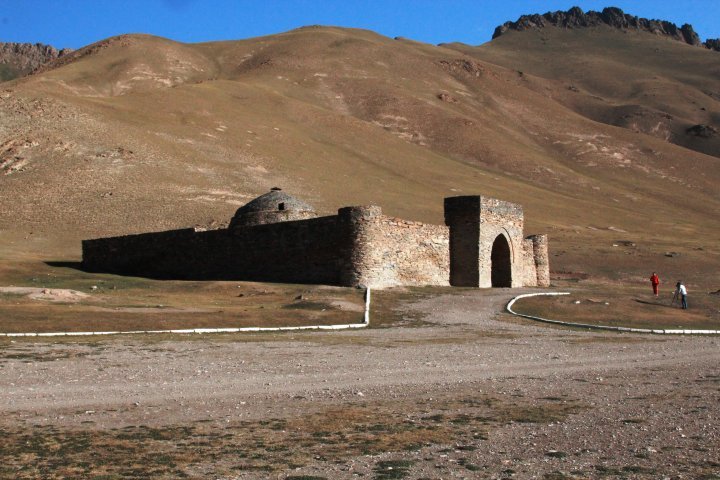
The building was built to shelter travellers on the Great Silk Road. ©Vladimir Prokopenko

The building is now an architectural heritage of Kyrgyzstan. It has been restored, some of its parts rebuilt. Today, Tash Rabat is 38 meters long and 36 meters wide. ©Vladimir Prokopenko
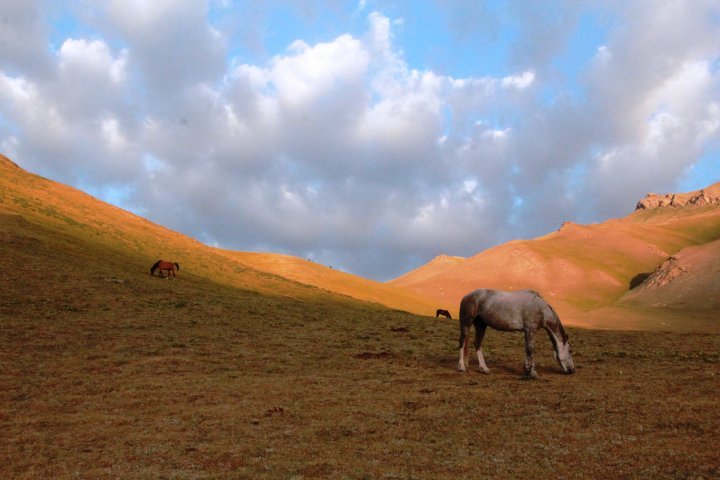
Kyrgyzstan landscape. ©Vladimir Prokopenko
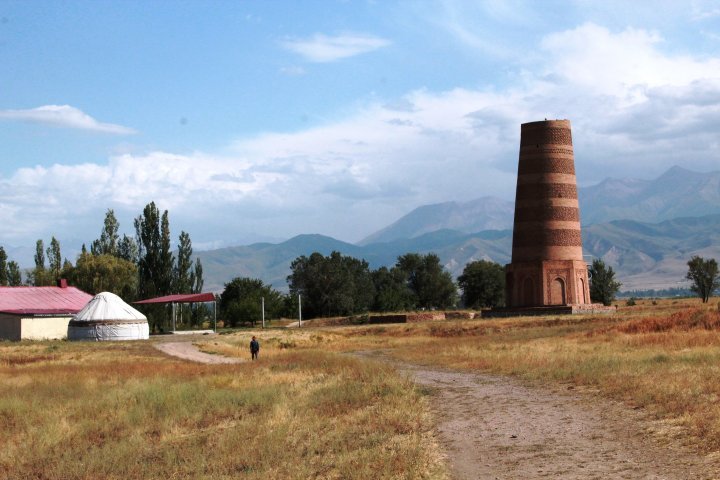
This structue in Kyrgyzstan is called Burana Tower. Its purpose is still unknown. The structure dates back to the X-XI centuries A.D. ©Vladimir Prokopenko

In Kyrgyzstan. ©Vladimir Prokopenko
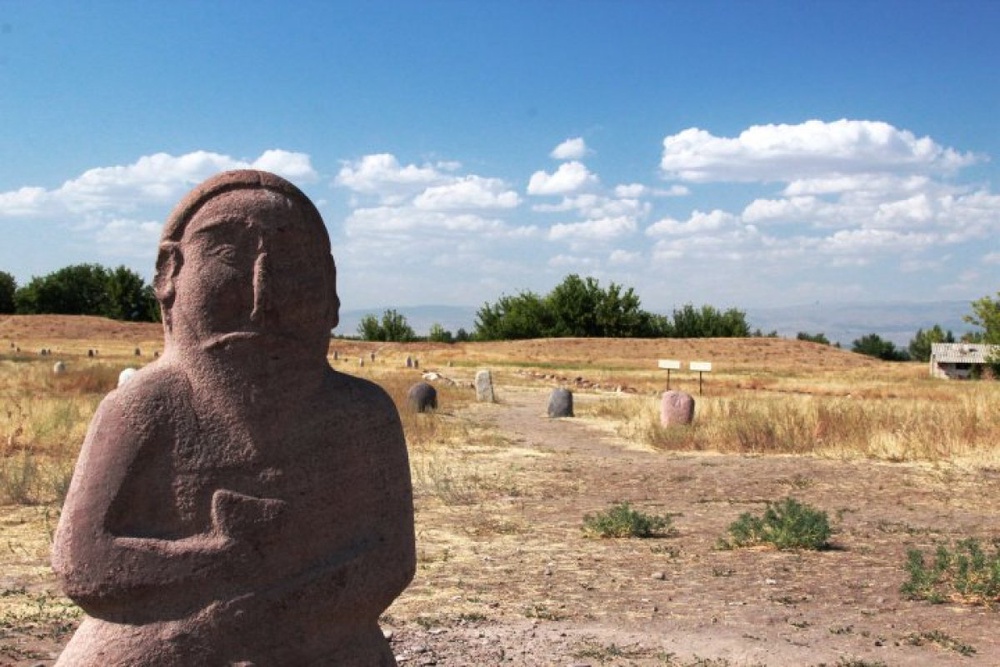
Ancient sculptures in Kyrgyzstan. ©Vladimir Prokopenko


 +7 (777) 001 44 99
+7 (777) 001 44 99















































